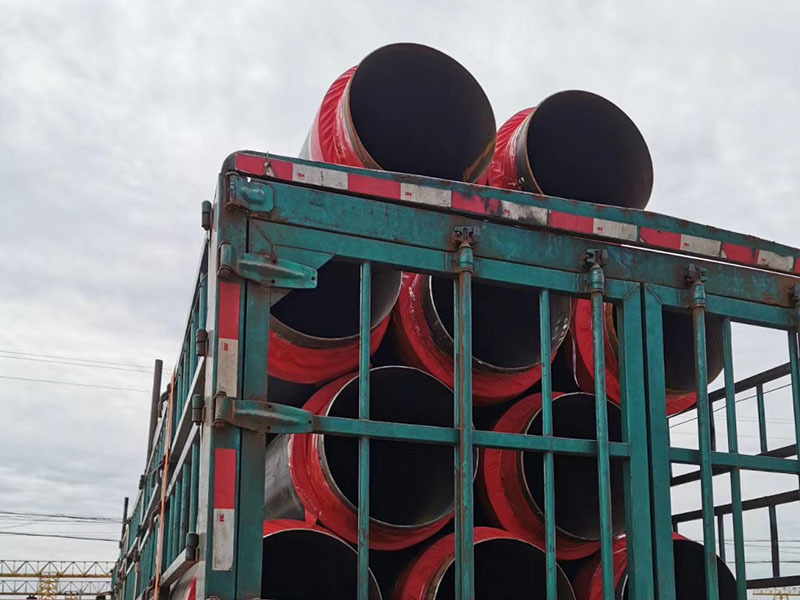Sustainable Solutions Below Ground: A Comprehensive Exploration of Buried Polyurethane Insulation Pipe Systems
Release time:
2025-07-02
Sustainable Solutions Below Ground: A Comprehensive Exploration of Buried Polyurethane Insulation Pipe Systems Table of Contents 1. Introduction to Buried Polyurethane Insulation Pipe Systems 2. The Importance of Sustainable Insulation in Modern Construction 3. Characteristics of Polyurethane Insulation 3.1 Thermal Performance 3.2 Moisture Resistance 3.3 Durability and Longevity 4. Applications of
Sustainable Solutions Below Ground: A Comprehensive Exploration of Buried Polyurethane Insulation Pipe Systems
Table of Contents
1. Introduction to Buried Polyurethane Insulation Pipe Systems
2. The Importance of Sustainable Insulation in Modern Construction
3. Characteristics of Polyurethane Insulation
3.1 Thermal Performance
3.2 Moisture Resistance
3.3 Durability and Longevity
4. Applications of Buried Polyurethane Insulation Pipe Systems
4.1 HVAC and Plumbing Systems
4.2 District Heating and Cooling
4.3 Industrial Applications
5. Installation Procedures for Polyurethane Insulation Pipe Systems
5.1 Site Preparation and Excavation
5.2 Pipe Installation Techniques
5.3 Backfilling and Restoration
6. Environmental Benefits of Using Buried Polyurethane Insulation
6.1 Energy Efficiency and Reduced Carbon Footprint
6.2 Resource Conservation
7. Case Studies: Successful Implementation of Insulated Pipe Systems
8. Frequently Asked Questions (FAQs)
9. Conclusion
1. Introduction to Buried Polyurethane Insulation Pipe Systems
In the quest for sustainable construction practices, **buried polyurethane insulation pipe systems** have emerged as an essential solution. These systems are designed to enhance energy efficiency while minimizing environmental impact. By effectively insulating pipes buried underground, they maintain optimal temperatures for fluids, reducing energy consumption for heating and cooling. This article delves into the specifics of these systems, examining their characteristics, applications, installation processes, and environmental benefits.
2. The Importance of Sustainable Insulation in Modern Construction
As the construction industry shifts towards sustainable practices, selecting effective insulation materials is critical. **Sustainable insulation** not only improves energy efficiency but also contributes to indoor air quality and environmental health. Choosing materials like polyurethane ensures that buildings are energy-efficient and equipped to meet stringent energy codes and standards.
3. Characteristics of Polyurethane Insulation
Polyurethane insulation offers several unique characteristics that make it ideal for buried pipe systems.
3.1 Thermal Performance
One of the standout features of **polyurethane insulation** is its superior thermal performance. With a low thermal conductivity rating, it provides excellent heat retention, ensuring that the temperature of the fluids within the pipes remains constant, regardless of external weather conditions.
3.2 Moisture Resistance
Polyurethane is inherently moisture-resistant, which minimizes the risk of mold and corrosion within the insulation. This property is particularly crucial for buried systems, where water infiltration can lead to significant long-term damage.
3.3 Durability and Longevity
With a lifespan exceeding 25 years, **polyurethane insulation** is built to last. Its resistance to environmental factors, such as UV radiation and chemical exposure, further enhances its suitability for underground applications.
4. Applications of Buried Polyurethane Insulation Pipe Systems
Buried polyurethane insulation pipe systems find utility in various applications across multiple sectors.
4.1 HVAC and Plumbing Systems
In HVAC systems, insulated pipes are essential for transporting chilled and heated fluids efficiently. Buried systems reduce energy loss, ensuring that indoor climates remain comfortable while minimizing energy consumption.
4.2 District Heating and Cooling
District heating and cooling networks rely heavily on insulated pipe systems to distribute thermal energy across vast urban areas. By using buried polyurethane insulation, these networks achieve greater efficiency and reduced operational costs.
4.3 Industrial Applications
Many industrial processes require efficient temperature control for fluid transport. Buried polyurethane insulation pipe systems provide an effective solution for industries, including chemical plants, food and beverage processing, and oil and gas.
5. Installation Procedures for Polyurethane Insulation Pipe Systems
Understanding the installation process is crucial for achieving optimal performance from buried polyurethane insulation pipe systems.
5.1 Site Preparation and Excavation
Before installation begins, thorough site preparation is essential. This process includes surveying the area, identifying existing utilities, and excavating trenches of appropriate depth and width to accommodate the pipes.
5.2 Pipe Installation Techniques
When installing **buried polyurethane insulation pipes**, it is vital to follow industry best practices. The pipes should be laid out according to predetermined plans, ensuring proper alignment and slope for fluid drainage. Secure connections between pipes are crucial to prevent leaks.
5.3 Backfilling and Restoration
Once the pipes are in place, backfilling the trenches with suitable material is necessary to protect the pipes and restore the landscape. Care is taken to avoid damaging the newly installed systems during this phase.
6. Environmental Benefits of Using Buried Polyurethane Insulation
The environmental impact of buried polyurethane insulation pipe systems cannot be understated.
6.1 Energy Efficiency and Reduced Carbon Footprint
By minimizing energy loss, these insulation systems contribute to lower operational costs and reduced greenhouse gas emissions. They align with global efforts to achieve sustainability in construction.
6.2 Resource Conservation
The durability of polyurethane insulation reduces the need for frequent replacements, conserving resources over time. Additionally, the energy saved during the operation of buildings translates into less reliance on non-renewable energy sources.
7. Case Studies: Successful Implementation of Insulated Pipe Systems
Several municipalities and industries have successfully implemented buried polyurethane insulation systems. These case studies demonstrate the effectiveness of these systems in improving energy efficiency, reducing costs, and meeting sustainability goals.
- **Case Study 1:** A district heating project in a major urban center adopted buried polyurethane insulation, resulting in a 30% reduction in energy consumption.
- **Case Study 2:** An industrial facility upgraded its chilled water distribution system, achieving significant operational cost savings while enhancing the reliability of its processes.
8. Frequently Asked Questions (FAQs)
1. What are the primary benefits of using polyurethane insulation for buried pipe systems?
**Polyurethane insulation offers excellent thermal performance, moisture resistance, and durability, making it ideal for applications in energy efficiency and sustainability.**
2. How long does polyurethane insulation last?
**Typically, polyurethane insulation has a lifespan of over 25 years, ensuring long-term performance and reliability.**
3. Can buried polyurethane insulation be used in all climates?
**Yes, buried polyurethane insulation is designed to perform effectively in various climates, providing consistent thermal performance regardless of external conditions.**
4. What is the installation process for buried polyurethane insulation systems?
**The installation process involves site preparation, excavation, pipe layout, proper connections, and careful backfilling to protect the systems.**
5. Are there any environmental benefits to using polyurethane insulation in construction?
**Yes, utilizing polyurethane insulation contributes to energy efficiency, reduces carbon footprints, and conserves resources due to its durability and longevity.**
9. Conclusion
Buried polyurethane insulation pipe systems represent a significant leap forward in sustainable construction practices. With their superior thermal performance, moisture resistance, and long lifespan, they prove to be invaluable assets for various applications, from HVAC systems to district heating networks. As we continue to prioritize energy efficiency and sustainability in our infrastructure, the adoption of these innovative insulation solutions will undoubtedly play a crucial role in shaping a greener future for construction. Investing in buried polyurethane insulation pipe systems not only benefits individual projects but also contributes to broader environmental goals, making them a wise choice for the modern age.
keyword:
Previous article
Related News





